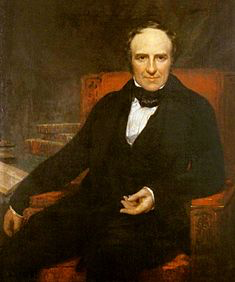Regency Personalities Series-Dr. Neil Arnott
Regency Personalities Series
In my attempts to provide us with the details of the Regency, today I continue with one of the many period notables.
Dr. Neil Arnott
15 May 1788 – 2 March 1874

Neil Arnott
Neil Arnott was a distinguished graduate of Marischal College, University of Aberdeen (AM, 1805; MD 1814) and subsequently learned in London under Sir Everard Home (1756–1832), through whom he obtained, while yet in his nineteenth year, the appointment of full surgeon to an East Indiaman. After making two voyages to China acting as a surgeon in the service of the British East India Company (1807-9 and 1810–11), he settled in London where he practiced from 1811–1854, and quickly acquired a high reputation in his profession. He gave lectures at the Philomathic Institution published as Elements of Physics. He was one of the founders of the University of London, 1836. Within a few years he was made physician to the French and Spanish embassies, and in 1837 he became physician extraordinary to the Queen. He was elected to the Fellow of the Royal Society (FRS) in 1838. He was a strong advocate of scientific, as opposed to purely classical, education; and he manifested interest in natural philosophy by the gift of 2,000 pounds to each of the four universities of Scotland and to the University of London, to promote its study in the experimental and practical form.
He was the author of several works, bearing on physical science or its applications, the most important being his Elements of Physics (1827), which went through six editions in his lifetime. In 1838 he published a treatise on warming and ventilating, and in 1855, one on the smokeless fireplace.
On the Smokeless Fire-place, Chimney-valves, and Other Means, Old and New of obtaining Healthful warmth and ventilation (London: Longman, Green, Longman & Roberts, 1855)
Elements of Physics (Philadelphia: Blanchard & Lea, 1856) (US edition, with additions by Isaac Hays)
A Survey of Human Progress (London: Longman, Green, Longman & Roberts, 1861)
From his earliest youth, Arnott had an intense love of natural philosophy, and to this added an inventiveness which served him in good stead in his profession and yielded the Arnott waterbed in 1832, which later was developed into a water-filled chair intended to prevent seasickness. Other inventions include the Arnott ventilator, the Arnott stove, etc.




